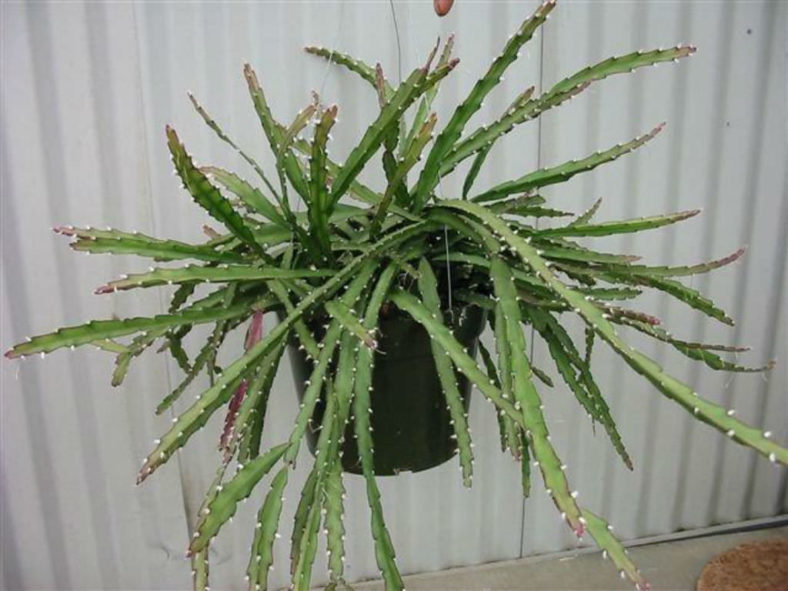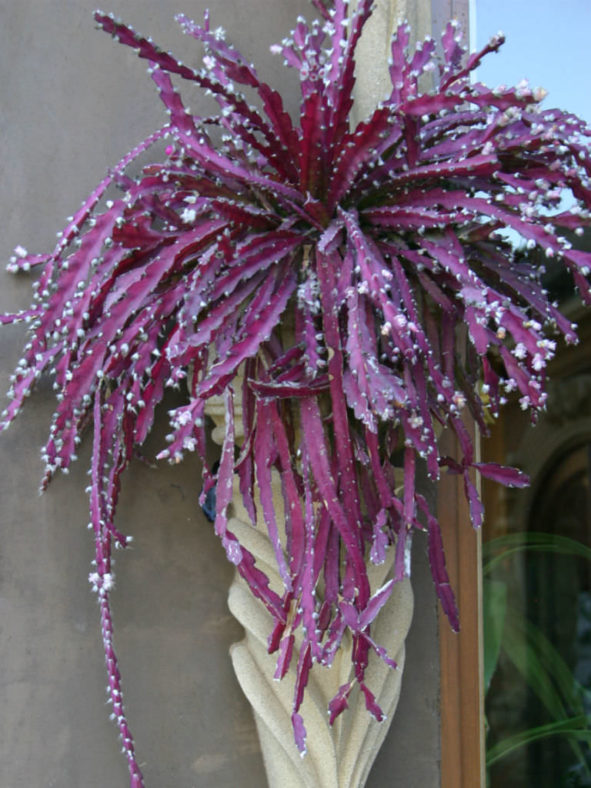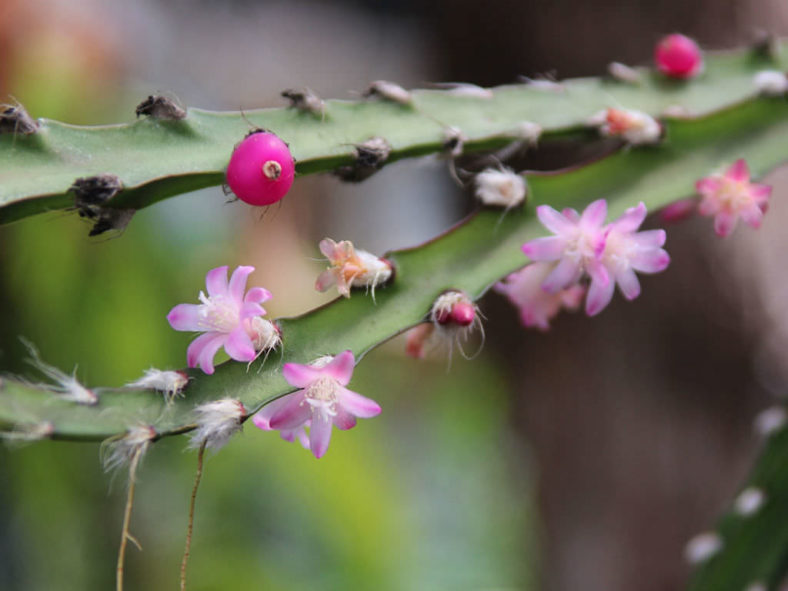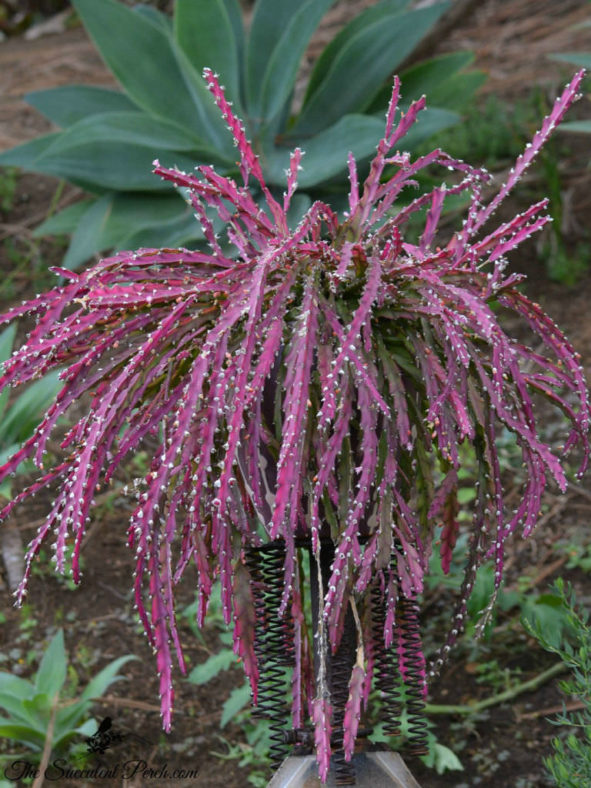Scientific Name
Lepismium cruciforme (Vell.) Miq.
Synonym(s)
Cactus cruciformis, Cereus cruciformis, Lepismium cruciforme var. cruciforme, Rhipsalis cruciformis
Scientific Classification
Family: Cactaceae
Subfamily: Cactoideae
Tribe: Rhipsalideae
Genus: Lepismium
Origin
Lepismium cruciforme is native to Brazil, Paraguay, and Argentina. It grows as epilithic on coastal rocks and epiphytic in seasonal forests.
Description
Lepismium cruciform is a highly branched cactus with long, segmented stems that have scalloped edges lined with tufts of short, white hairs but no spines. The stem segments are thick, fleshy, highly variable, flat, sometimes 3-, 4-, or even 5-angled, and can grow up to 20 inches (50 cm) long and 0.8 inches (2 cm) wide. They are green, usually suffused with purple, and can become almost maroon in full sun.
The flowers can reach 0.5 inches (1.3 cm) in length and appear 2 to 5 per areole in late winter and early spring. They vary in color from cream, yellow, and pink to rarely magenta. The fruits are subglobular, purplish to red, translucent, and with light brown to black seeds inside. They can grow up to 0.5 inches (1.2 cm) in diameter.

Forms of Lepismium cruciforme
How to Grow and Care for Lepismium cruciforme
Hardiness: USDA hardiness zones 10a to 11b: from 30°F (-1.1°C) to 50°F (10°C).
Rhipsalis do not thrive in direct sunlight. Exposure to the afternoon sun can burn the leaves, turn them yellow, or lead to spotting. However, they will not bloom without sufficient sunlight, and their growth can be stunted. Therefore, these cacti do best with morning sun and afternoon shade.
As Rhipsalis is commonly grown indoors, care must be given to the placement of the plants. They should be kept at least 20 inches (50 cm) away from windows that receive midday or afternoon sun. The glass in the windows can multiply the heat from the sun's rays, causing sunburned leaves. Keep in mind that in its native environment, Rhipsalis is accustomed to receiving light filtered through dense, overhanging tree branches. Picturing this environment can help you adjust your lighting accordingly.
Rhipsalis is not a drought-resistant plant, so regular watering is essential. Overwatering, however, can cause weak stems and rotted roots. Using a watering can helps you measure how much water you are providing. The size of the pot, compared to the size of the plant, the humidity levels in the home, and the type of potting soil used can all affect the watering frequency.
Learn more at How to Grow and Care for Rhipsalis.
Links
- Back to genus Lepismium
- Succupedia: Browse succulents by Scientific Name, Common Name, Genus, Family, USDA Hardiness Zone, Origin, or cacti by Genus
Photo Gallery
Click on a photo to see a larger version.


